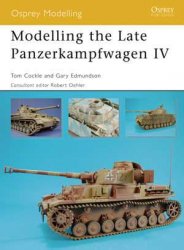Not wishing to leave things in this state of half-failure. General Alexander put at the disposal of the 5th Army the New Zealand Corps (Lieutenant-General Frey-berg), consisting of the 2nd New Zealand, the 4th Indian, and the British 78th Divisions.
But before launchinghis attack. General Freyberg demanded the destruction of the historic Monte Cassino abbey which
V The bombing of Cassino town on March 15, 1944.
Overleaf: Aftermath of the bombing campaign.



, •? town, at the top of
Monte Cassino, stood the Abbey of St. Benedict, a religious foundation of great importance in which the body of St. Benedict was preserved. Believing quite erroneously that the Germans had turned the abbey into an observation post, the A'llies bombed this too. The Germans managed to evacuate the abbot and his monks, together with the treasures, as the bombing started. And when the destruction was complete, the Germans took over the ruins.
V Hits on and around the abbey.
V V The bombardment.


Overlooked the Liri valley from a height of 1,700 feet. General Clark showed some scepticism when informed hy his subordinates that the Germans were using the monastery as an artillery observation post and had heavy weapons stored inside it. He thus wholeheartedly opposed this act of vandalism and it is a fact, proved over and over again, that on the evening before February 15 the only soldiers anywhere near the monastery were three military policemen stationed there to keep the troops out.
Freyberg appealed to Alexander, who finally agreed with him, perhaps on the evidence of a misinterpreted radio message. A German voice had been heard asking:
”'Wo ist der Abt? 1st er noch im Klos-ter?’ (Where is the 'Abt’? Is it still in the monastery?)
"'Abt’ is the German military abbreviation for 'abteilung’, meaning a section. But unfortunately 'Abt’ also means 'Abbot’, and since 'Abf is masculine and 'abteilung’ feminine, the conversation referred to the Abbot.’’
Sir Henry Maitland Wilson, C.-in-C. Mediterranean, made available the necessary air formations. In the morning of February 15, therefore, 142 four-engined and 87 two-engined American bombers flew over Monte Cassino in three waves, dropping 453 tons of high explosive and incendiary bombs, and reduced the monastery of Saint Benedict to a complete and absolute ruin.
"The monks had no idea that the rumble of heavy bombers which they could hear approaching from the north concerned them in any way. Prayers were just being said in the bishop’s small room. The monks were praying to the Mother of God to protect them, and when they reached the words 'pro nobis Christum exora’, a terrific explosion shattered the peace. The first bombs were bursting. It was nine forty-five.’’
This bombardment, of which he disapproved, aroused two different impressions in General Clark. In his book Calculated Risk he says:
". . . and when the clock got around to nine-thirty, I immediately heard the first hum of engines coming up from the south. I tried to judge their progress by the steadily increasing volume of sound, a mental chore that was interrupted by a sudden roaring explosion. Sixteen bombs had been released by mistake from the American planes; several of them hit near my command post, sending fragments flying all over the place, but fortunately injuring no one, except the feelings of my police dog, Mike, who at that time was the proud mother of six week-old pups.
"Then the four groups of stately Flying Fortresses passed directly overhead and a few moments later released their bombs on Monastery Hill. I had seen the famous old Abbey, with its priceless and irreplaceable works of art, only from a distance, but with the thundering salvoes that tore apart the hillside that morning, 1 knew there was no possibility that I ever would see it at any closer range.’’




 World History
World History









